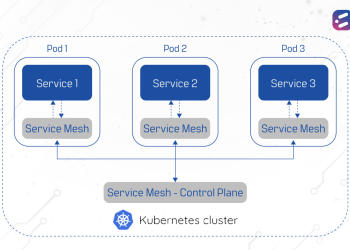Continuous Integration and Continuous Deployment (CI/CD) is a fast, efficient iterative process. This means that, without a concentrated focus on security, there simply isn’t enough time to build in security checks and balances before go-live.
A traditional Continuous Integration and Continuous Deployment (CI/CD) pipeline uses a large number of tech tools. Each stage of the pipeline must be closely monitored at all times, to ensure that any irregularities are swiftly identified and addressed.
Using the right code analysis tools, it’s possible to automate the process of monitoring the code used at every stage of the pipeline. This guards against the possibility of vulnerabilities potentially creeping in and giving malicious actors a way into your system.
To further secure your system, it is important to prevent misuse or improper access to key data like passwords, API, GitHub tokens, SSH keys, private certificates for secure communication, transmitting and receiving of data (TLS, SSL, and so on), private encryption keys for systems like PGP, and other application keys/credentials. Eliminate hard-coded credentials in containerized applications and minimize broad access to credentials, data and systems.
In addition to automated system security, conduct regular comprehensive audits on system and code to maintain high-level security and reduce risk of cyberattack.
Here are 6 best practices that could help you improve security in your CI/CD processes.
1. Remove hardcoded credentials from tools
With automation, storing and keeping track of these credentials is no longer the responsibility of your team. By default, some of this data is hardcoded into Jenkins, GitHub and other CI/CD tools. Remove the hardcoding from your tools before getting started, or the information could be misused.
2. Don’t concentrate data into a single location
Distribute sensitive data as much as possible across a large number of Jenkinsfiles. This reduces the potential attack value of each file.
3. Minimize access permitted to team members
Maintain highly granular access management, following the principle of ‘least privilege’. A large number of people work concurrently on each project, making access management fundamental to CI/CD security. Undertake segmentation by role, task and category to restrict access.
4. Restrict access to non-humans as well
Once a container’s machine identity is authenticated by the system, it can access multiple resources based on defined access control policy. To secure against non-human access, destroy containers and virtual machines after use.
5. Apply rigorous security parameters
Use password managers and frequently change passwords. Verify the identity of individuals accessing resources with multi-factor authentication and OTPs to restrict access to the most sensitive tools and data.
6. Safeguard credentials from excessive automation
Ensure keys and secrets are not inadvertently passed on by default, during builds for pull requests via your CI/CD pipelines.
Remember, the goal of CI/CD is not just to make communication between team members seamless and effective, but safe as well. Follow these simple steps and best practices to optimize safety, speed and quality.
CloudNow brings you a cutting-edge technology stack that enables single-click deployment, continuous integration, automated security alerts, easy code management and review, and on-premise, public, or hybrid cloud deployment. Contact us today to know more.













